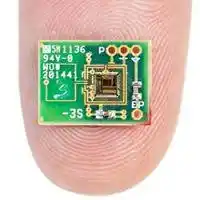افشین رشید
اُستادیار ؛ عضو هیات علمی دانشگاه آزاد اسلامی واحد علوم و تحقیقات تهران
594 یادداشت منتشر شدهMethods for Obtaining information at Nanoscale and Precise Dimensional Materials and Tunneling for Electronic Components

To understand the components of nature, it is important to note that atoms are the building blocks of matter, and each matter is composed of specific atoms that, when placed together, form molecules. The number of these atoms is limited (more than a hundred types of atoms), but when placed together, they form hundreds of thousands of molecules, each with different properties.
What holds atoms together in a molecule, and molecules together in a substance, are forces that act like the attraction and repulsion of two magnets. These forces exist between the electrons and the nuclei of atoms, and they are very strong in their own right.
Matter is made from the connection of molecules, in fact, the intensity of the intermolecular bond and the force between the molecules causes the matter to be in the form of a liquid, solid or gas. Of course, the type of bonds also has a great impact on the behavior of the matter, for example, some bonds, known as ionic bonds, cause the material to conduct electricity. Different numbers, directions and angles of a type of bond also cause different properties.

For example, diamond and graphite are both made up of atoms of the same element, carbon, but because the number and arrangement of bonds between its atoms are different, diamond is very strong and graphite is very soft.

Precise sizing of micro-nanoelectronic devices with STM scanning tunneling microscope:
If you want to image a solid surface that conducts electricity, you need to use a scanning tunneling microscope. These microscopes are very similar to atomic force microscopes (AFM). They use a type of electric current that is established when the tip moves within a nanometer of the conductive surface. At this time, the current begins to transfer from the surface to the tip. Note that there is a distance between the tip and the surface and the electrons pass through an energy barrier (this process is called tunneling). During tunneling, if the current is constant, changes in the distance from the tip to the sample will give us information about the surface. If we keep the distance from the tip to the sample constant, changes in the tunneling current will give us information about the surface. Which mode or mode to use depends on the conditions of the sample and our requirements. Usually, when the surface of the sample is irregular, the constant current mode is used and requires more time than the constant height mode.